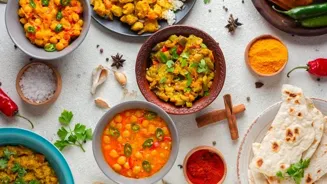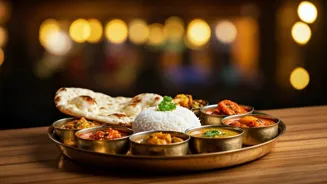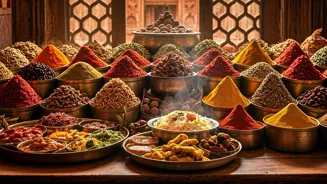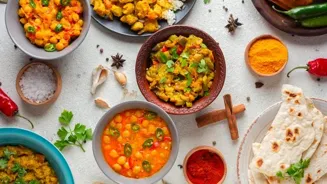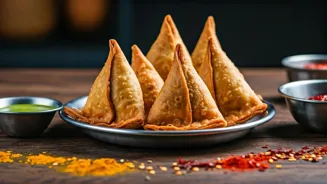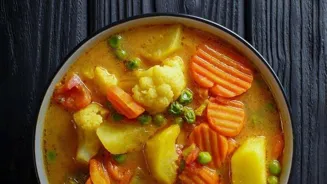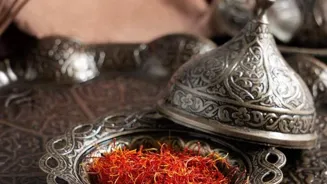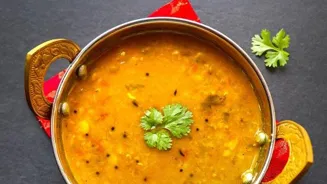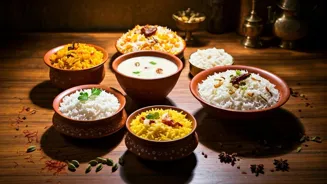Discover 10 surprising facts about Indian cuisine, from spices to sweets! Uncover the rich history and diverse flavors in each bite
Namaste, food lovers! India, a land of vibrant culture and breathtaking
landscapes, is equally renowned for its diverse and flavourful cuisine. From the snow-capped Himalayas to the sun-kissed beaches of the south, every region boasts a unique culinary identity.
But beyond the familiar curries and biryanis, lies a treasure trove of fascinating facts about Indian food that are sure to surprise and delight you. So, grab a cup of chai and let's embark on a delicious journey to uncover 10 little-known secrets of Indian cuisine!
Indian cuisine shaped by historic Spice Route trade
Indian cuisine owes its intricate flavour profiles to the historic Spice Route. For centuries, India served as a global hub for spice trade, attracting merchants from far and wide. This exchange introduced new ingredients and techniques, shaping the flavour profiles of Indian dishes.
Black pepper, cardamom, cinnamon, and turmeric were all prized commodities that found their way into Indian kitchens, transforming simple recipes into culinary masterpieces. The influence of the Spice Route is palpable in the rich aromas and complex tastes that define Indian food today.
Indian vegetarian cuisine: rich history, diverse ingredients, flavorful dishes celebrating nature
While Indian cuisine offers a wide array of dishes, vegetarianism holds a prominent place with deep roots in ancient Indian philosophies. Principles of non-violence and respect for all living beings have shaped dietary practices for centuries.
Vegetarian cooking is not just about excluding meat but also celebrates the bounty of nature. India boasts an impressive variety of vegetables, legumes, and grains and utilizes them to create dishes that are not only nutritious but also incredibly delicious.
From creamy lentil dals to flavourful vegetable curries, vegetarian cuisine in India is a culinary adventure that is enjoyed by millions.
India's diverse rice varieties shape local cuisines
Rice is a staple food across India. However, what many don't know is the sheer diversity of rice varieties cultivated throughout the country. Each region has its unique rice varieties, each with a distinct flavour and texture.
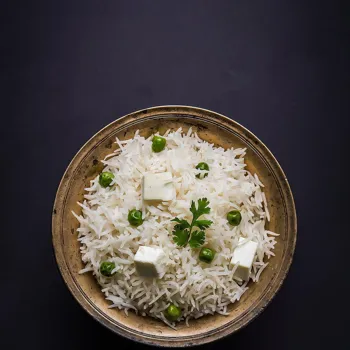
From the fragrant Basmati rice of the north to the short-grained Sona Masuri of the south, the options seem endless. These regional rice varieties play a vital role in shaping local cuisines. They often define the taste of dishes such as biryani, pulao, and even humble everyday meals.
Rich rice cultivation showcases India's agricultural and culinary prowess
The rich heritage of rice cultivation in India is a testament to the country's agricultural diversity and culinary expertise.
Bengali spice blend Panch Phoron adds magic to dishes
Panch Phoron, a Bengali spice blend consists of five magical spices. The blend contains fenugreek, nigella seeds, cumin, mustard seeds, and fennel seeds. This aromatic combination is typically tempered in oil before being added to vegetarian dishes, especially curries and vegetable preparations.
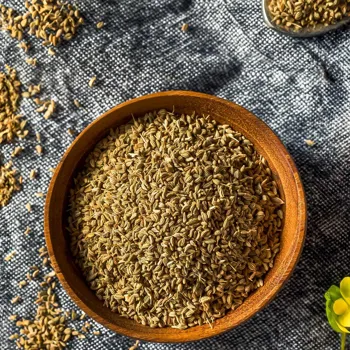
Its distinct flavor profile enhances the taste of simple dishes, creating an explosion of flavor. Each spice contributes its unique note to the ensemble creating a symphony of tastes. Panch Phoron is not just a spice blend, it is a symbol of Bengali culinary heritage.
Indian pickles: diverse, flavorful, boost immunity, culinary treasures
In India, pickles, or 'achaar', are more than just a side dish; they are an integral part of the culinary experience. Prepared using a variety of fruits, vegetables, and spices, each pickle boasts a unique flavor profile.
Mango, lime, carrot, and gooseberry are just a few of the ingredients that find their way into Indian pickles. The fermentation process varies from region to region, contributing to the diversity of taste and textures.
Pickles not only add a tangy and spicy kick to meals but also aid in digestion and even boost immunity. They are a testament to India's culinary ingenuity and its ability to transform simple ingredients into culinary treasures.
The Tiffin system in Mumbai delivers home-cooked meals with precision, embodying Indian culture
The Tiffin system is a unique Indian tradition of delivering freshly cooked meals to workers. It originated in Mumbai during the British Raj and has since become an iconic part of the city's culture.
'Dabbawalas' or lunchbox carriers, navigate the bustling city streets of Mumbai to deliver thousands of tiffin boxes, every day, with incredible accuracy. The efficiency of system is world-renowned.
The warm home-cooked meal delivered right to workplace is a symbol of love and care, connecting people to their families and traditions. The Tiffin system embodies the essence of India's commitment to delicious food and its unique approach to logistics and community.
Yogurt, or 'dahi', a versatile staple in Indian cuisine
Yogurt, or 'dahi', is a staple in Indian cuisine, with a history that stretches back centuries. In India, yogurt transcends its role as a simple dairy product; it is used in countless ways, from cooling beverages such as lassi to marinades for tandoori dishes.
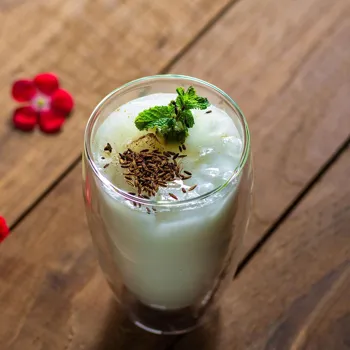
It is also an essential ingredient in raitas, which are refreshing yogurt-based side dishes served alongside spicy meals. Dahi is believed to have cooling properties in Ayurveda. Yogurt's versatility and health benefits ensure its continued popularity across India.
Indian sweets symbolize joy in diverse celebrations, rich heritage
Indian sweets, or 'mithai', are an integral part of celebrations and special occasions. From rich and creamy milk-based sweets to delicate and fragrant pastries, the variety is mind-boggling. Every region boasts its unique specialties, with recipes passed down through generations.
Sweets hold a special place in Indian culture, symbolising happiness, prosperity, and togetherness. Whether it is a festive Diwali feast or a simple family gathering, no celebration is complete without a delectable assortment of Indian sweets.
Spices enhance flavor and offer medicinal benefits in Indian cuisine
Spices are the heart and soul of Indian cuisine. Beyond adding flavour, spices are also known for their medicinal properties. Turmeric, for instance, is renowned for its anti-inflammatory properties, while ginger aids digestion and cloves have antiseptic qualities.
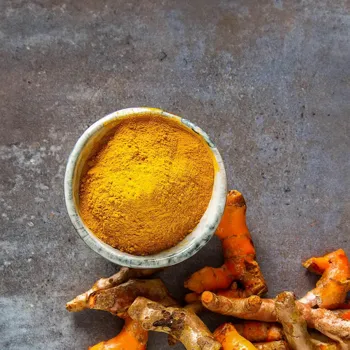
Indian cooks have long understood the healing power of spices, using them not only to enhance the taste of food but also to promote health and well-being.
This holistic approach to cooking is a hallmark of Indian culinary traditions, where food is not just sustenance but also a source of vitality and longevity.
India's diverse culinary landscape offers unique flavors and traditions in every state
India is a land of incredible diversity. The culinary landscape reflects this richness with each region boasting its unique flavors, ingredients, and cooking techniques. From north to south and east to west, every state offers a distinctive culinary experience.
Exploring the regional cuisines of India is akin to embarking on a gastronomic adventure across the country. The constant exploration of diverse flavors and traditions keeps Indian food vibrant. It is a testament to creativity and innovation.
The Indian food continues to evolve and delight food lovers around the world.
Indian cuisine: rich history, diverse flavors, cultural significance
So there you have it – 10 fascinating facts about Indian cuisine that you probably didn't know! From its historical roots to its culinary traditions, Indian food is a captivating blend of flavors, aromas, and cultural significance.
The next time you savor an aromatic curry or a flavourful biryani, remember the rich history and the myriad of influences.
AI Generated Content. Glance/InMobi shall have no liability for the content